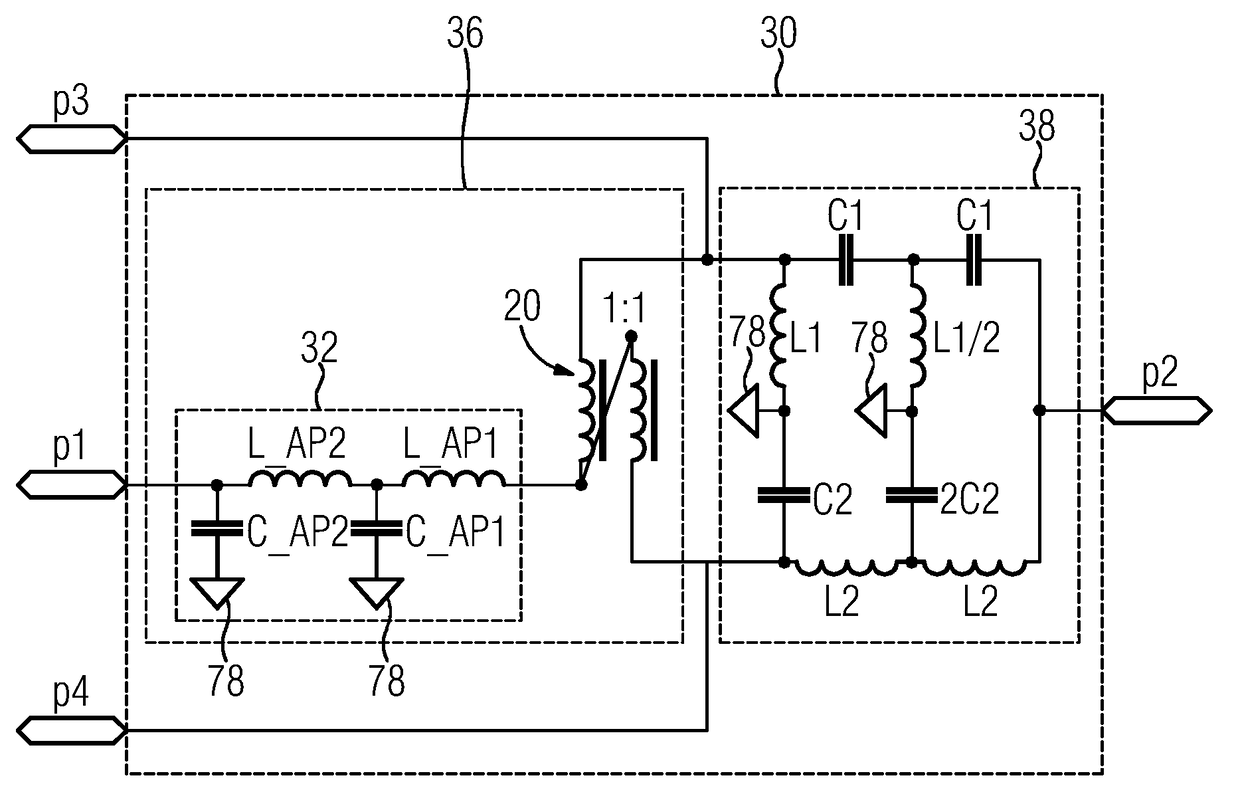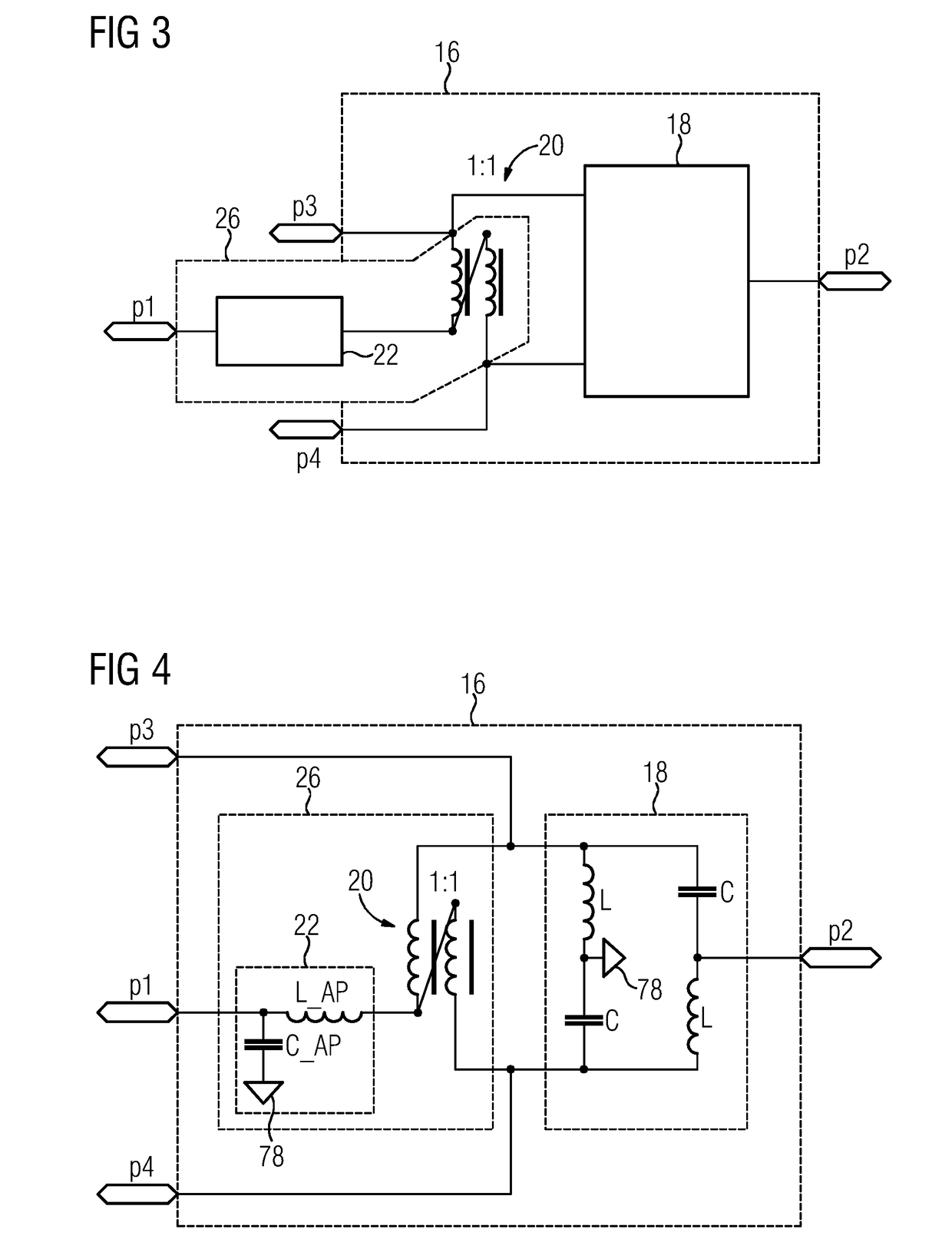Directional coupler
a technology of directional couplers and directional couplers, which is applied in the direction of waveguide type devices, fixed transformers, instruments, etc., can solve the problems of large installation space for directional couplers, high power requirements, and high cost of directional couplers, and achieve the effect of low installation complexity
- Summary
- Abstract
- Description
- Claims
- Application Information
AI Technical Summary
Benefits of technology
Problems solved by technology
Method used
Image
Examples
Embodiment Construction
[0040]If, for example, in the case of a 180° hybrid, a radiofrequency signal is fed into any one of its ports, the power of this radiofrequency signal is distributed among two output ports, (e.g., with approximately the same magnitude). There may be substantially no power available at the third port, for which reason the third port is also referred to as decoupled port in this case. In the case of a 180° hybrid, the phase difference between the signals at the output ports at which half the power is provided is either 0° or 180°. Besides this, there are also 90° hybrids in which the corresponding phase difference is then 0° or 90°.
[0041]The signal behavior of a hybrid, in particular of a 180° hybrid, may be characterized by the scattering matrix specified below, occasionally also referred to as S-matrix. In contrast to an ideal scattering matrix in which the phases between input and output ports are also strictly defined, in practice often only the phase difference between the two po...
PUM
| Property | Measurement | Unit |
|---|---|---|
| relative phase angle | aaaaa | aaaaa |
| relative phase angle | aaaaa | aaaaa |
| frequencies | aaaaa | aaaaa |
Abstract
Description
Claims
Application Information
 Login to View More
Login to View More - R&D
- Intellectual Property
- Life Sciences
- Materials
- Tech Scout
- Unparalleled Data Quality
- Higher Quality Content
- 60% Fewer Hallucinations
Browse by: Latest US Patents, China's latest patents, Technical Efficacy Thesaurus, Application Domain, Technology Topic, Popular Technical Reports.
© 2025 PatSnap. All rights reserved.Legal|Privacy policy|Modern Slavery Act Transparency Statement|Sitemap|About US| Contact US: help@patsnap.com



